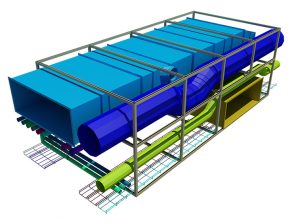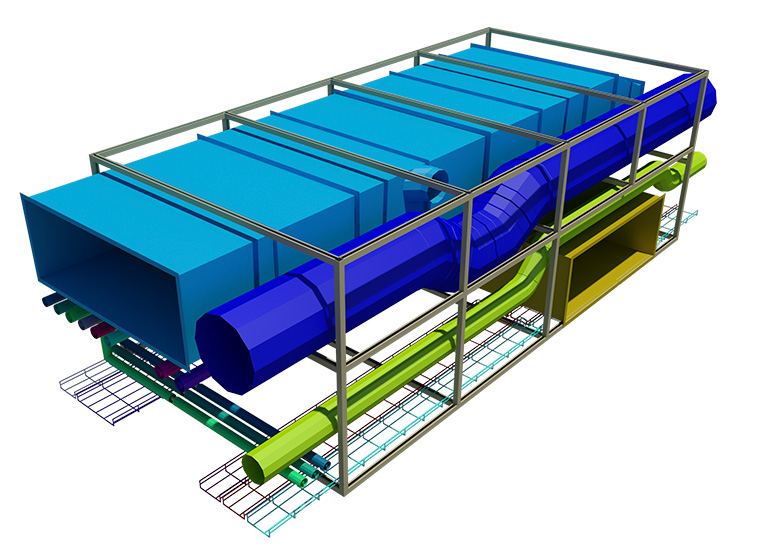BIM Explained – Part Two
Following on from last month’s blogs about the difficulties many CAD Services companies have in explaining the technical jargon that comes with being a BIM Manager, here is part two of our BIM glossary:

Clash Detection
This term is used in PAS 1192-2 and refers to the native-format model file which should be used in any spatial co-ordination processes. This process is used to avoid clashes between Building Information Models that have been prepared using different disciplines. The key benefit from a BIM Managers point of view, is that it can help to reduce errors and costs before construction begins.
Common Data Environment (CDE)
This is the single source of information for any project, which can be accessed by all stakeholders. It is used to collect, manage and disseminate all approved project documents amongst a multi-disciplinary team, as part of a managed process. The important thing about a CDE is that although the information can be freely shared, the ownership of the information still resides with the originator.
Construction Operations Building Information Exchange (COBie)
This mouthful basically covers the information exchange protocol for all BIM projects, which is delivered in a spreadsheet format. Originally designed by the US Army Engineering Corps, the information contained will develop progressively as the project moves on and information can be added from various sources – relating to brief, construction, design, demolition, operation or refurbishment, as required.
Data Drop
This is a key stage in information delivery, where information is fed from the BIM to the client. The actual content of these data drops hasn’t been defined yet, but as a CAD company in Dubai, we know they are key points of reference for clients and the design and delivery team. For BIM Level 2 compliance, each data drop must be to the COBie standard (see above).
Data Exchange Specification
This is the specification for any electronic file formats that are used for the digital transfer of data between BIM software applications – such as COBie and IFC.
Federated Model
This is basically a Building Information Model that has been compiled by amalgamating several different models into one, or by importing of one model into another as a means of collaborative working. The federated model is the basis for the Governments BIM Compliance Level 2 mandate, whereas Level 3 compliance demands that all stakeholders work on one integrated and shared model.
Government Soft Landings (GSL)
This is a UK Government Framework that has been put into place to maximise the benefits of using BIM throughout a buildings life cycle. The aim of GSL is to reduce both capital and running costs, whilst also improving asset delivery performance and operation. The intent is that BIM will be used as a data management tool, in order to streamline the briefing process. Evaluation of the building will then be carried out post-occupancy, to measure the performance of the building and optimise it.
To find out more about our services as a CAD company in Dubai, please call us on +971 556 1988 or email us at grant.hood@thecadroom.com. Alternatively, to speak to our UK based team, please call 0161 437 0348 or email office@thecadroom.com

